Blog
Posted on: March 18th, 2025
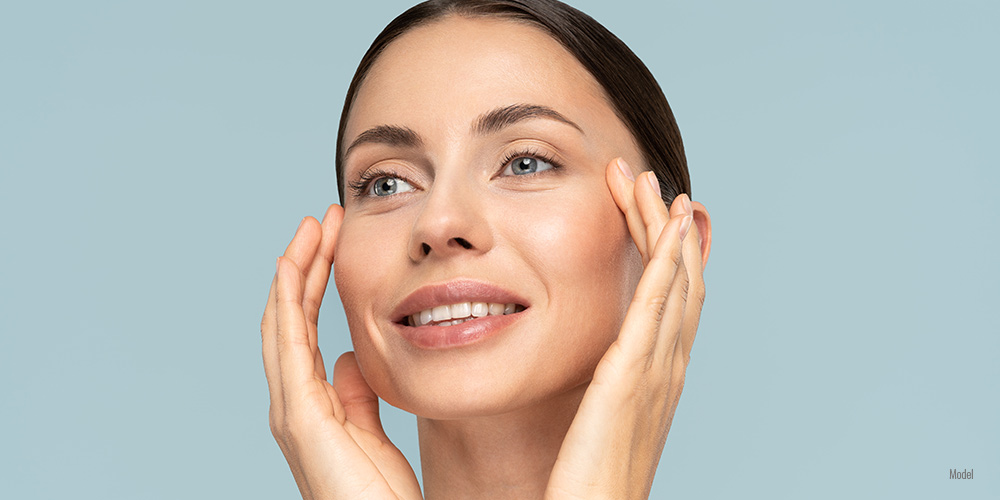
A facelift (also known as rhytidectomy surgery) is a cosmetic procedure designed to reduce or eliminate visible signs of aging in your face and neck. Whether you want to tighten sagging skin, smooth deep wrinkles and folds, or restore a more youthful contour, a facelift can offer dramatic yet natural-looking results. However, one of the most important steps in your facelift journey is preparation. In this blog, we’ll go through some of the essential steps necessary to prepare for your facelift procedure so that you can enjoy a safe and healthy surgery and recovery.
Are You a Good Candidate for a Facelift?
Not everyone is an ideal candidate for facelift surgery. Some people may benefit from non-surgical options before undergoing invasive surgery. However, if you wish to address more severe signs of aging, a facelift is the answer. The best candidates for a facelift include men and women who are nonsmokers and in good overall health. You should also have good skin elasticity and realistic expectations for your results. Once you’ve had a consultation with Dr. Wald to determine if you’re a good candidate for a facelift, it’s time to prepare for your surgery!
Mentally Preparing for Facelift Surgery
As with any cosmetic surgery, facelift patients need to understand that while the procedure can do wonders for their confidence and turn back the clock on aging, having realistic expectations about the surgery and your results is essential. Some things you should consider before undergoing a facelift include:
Understanding the Limitations of the Procedure
A facelift can address wrinkles and sagging or excess skin, but only in the lower two-thirds of your face. If you have drooping eyelids or eyebrows, adding blepharoplasty (eye lift surgery) or a forehead lift to your facelift may be necessary to achieve comprehensive results. You may also undergo non-surgical skin resurfacing, BOTOX® Cosmetic, or injectable fillers to enhance your facelift results.
Scars Are Inevitable
As with any surgical procedure, scarring after a facelift is inevitable. However, the beauty of a facelift is that incisions are hidden in your hairline or behind your ears and will fade over time.
Be Patient as You Heal
Again, as with any surgery, it takes time to heal after a facelift. While you will see some immediate results, it will take a few months for all swelling and bruising to dissipate, so be patient and follow Dr. Wald’s post-op instructions to ensure the best outcome.
Facelift Results Require Maintenance
While facelift results typically last for as many as ten to fifteen years, the natural aging process will continue. Maintaining the results of your facelift means making good lifestyle choices (including avoiding smoking and following a healthy diet), adhering to an anti-aging skincare routine (including daily broad-spectrum SPF), and possibly undergoing non-surgical skin rejuvenation treatments.
A facelift can give you a more youthful and refreshed appearance; however, it is not a one-size-fits-all solution. Results will vary from person to person depending on your unique facial anatomy, skin condition, and whether or not you combine other aesthetic procedures with your facelift.
Other Facelift Preparations
Lifestyle Adjustments
Before facelift surgery, you’ll need to quit smoking, as it inhibits circulation and can delay healing. Typically, you’ll need to avoid nicotine for four to six weeks before and after your surgery. You should also avoid medications and supplements that can increase the risk of bleeding, including aspirin, NSAIDs, blood thinning medications, Vitamin E, fish oil, and certain herbal supplements.
Prepare a Recovery Space at Home
After your facelift, you’ll need a comfortable area to rest and recuperate. Preparing your home in advance may include:
- Making sure you have ice packs, gauze, and prescription and over-the-counter pain medications close at hand
- Having soft, nutritious foods available (like soup and smoothies), as eating may be uncomfortable for the first few days
- Creating a comfortable area with enough pillows to elevate your head to help minimize swelling, as well as any books and electronics (including chargers) for entertainment
- Arranging for help transporting kids to and from activities, as well as any other daily tasks, as you’ll need to rest for the first few days after surgery
Make Sure You Have Everything Ready for the Day of Surgery
When you come in for your facelift, make sure you bring the following items with you:
- Photo ID
- Glasses and your contact lens case
- A pillow for the ride home (to keep your head elevated and comfortable)
- Comfortable clothing, like a loose-fitting, button-down shirt to wear home after surgery
Above all, make sure you have arranged for someone to drive you home and stay with you for the first 24 hours after surgery as you recover from general anesthesia.
Learn More About Facelift Surgery in Orange County, CA
If you’re ready to take the next step in facial rejuvenation, it’s time to explore the benefits of a facelift at The Aesthetic Institute in Orange County. Once you’ve determined that you’re a good candidate for a facelift, Dr. Wald will go over the specifics of the surgery with you, helping to set you up for a successful experience from consultation to recovery. To schedule a facelift consultation with Dr. Wald, call our office today at (714) 312-3549 or complete the online contact form.
Posted on: March 17th, 2025

Surfer’s Skin Survival Guide: Protecting Your Face from Sun, Salt, and Sand
Saltwater, sand, and sunlight attack your skin every time you surf. The ocean’s beauty pulls you in, but harsh elements wear down your face. Without protection, dryness, sun damage, and irritation set in. Sunscreen helps, yet it’s not enough. You must go beyond SPF to stop aging signs and keep your skin strong. Your face fights the elements every time you paddle out. Protecting your face from sun, salt, and sand should become a habit, not an afterthought. Find a way to maintain a skincare routine that works for you without giving up your time in the water.
What Does Surfing Do to Your Skin?
Every wave carries more than just a thrill. Salt pulls moisture from your skin, making it dry and tight. The sun burns exposed areas, leaving red patches that turn into wrinkles. Wind and sand create tiny cuts, leading to long-term damage. Skin issues stack up fast:
- Sunburn and premature aging from UV rays
- Dehydration and irritation from saltwater
- Micro-abrasions and sensitivity from wind and sand
Without proper care, rough patches, redness, and dark spots appear. These problems don’t fade easily. Prevention beats treatment every time.
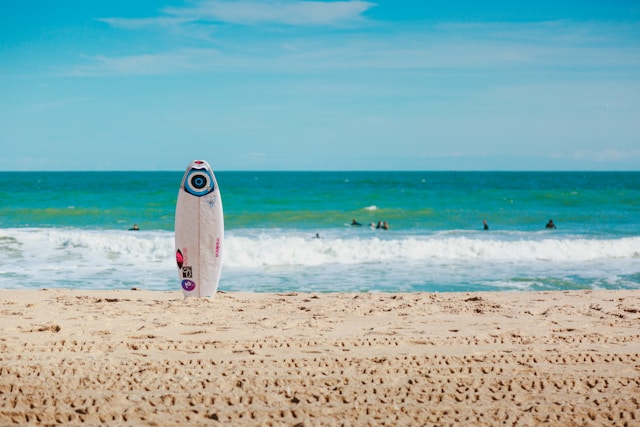
- Surfing can damage your skin
Protecting Your Face from Sun, Salt, and Sand: Actionable steps to take
Surfing is not the same as taking a walk when it is sunny outside. Harsh sun can be damaging, but combined with salt and sand from the beach, it can make skin problems worse. In order to avoid problems, you need to:
- Choose the right sunscreen for surfers
- Use protective gear
- Prep your face for the elements
- Repair and rehydrate your skin after surfing
Adjust Gradually If You Are New To Surfing
Not many people are aware that skincare routine depends on external factors as well. For instance, if you change your living space, you might need to adjust your routine as well. Be it a week-long vacation or a home relocation, your health should still come first. Additionally, starting to surf in a new location takes patience. Let’s say you’re moving to the Bay Area, for instance. The Bay Area’s surf can vary greatly, with conditions ranging from gentle breaks suitable for beginners to challenging waves for experienced surfers. Spots like Pacifica and Ocean Beach are popular, but the latter can have particularly strong currents and chilly waters, so it’s vital that you prepare for these conditions.
Additionally, if relocating during summertime, staying cool during a warm weather Bay Area move should be your top priority. A better approach involves easing in during a less intense season. Fall and spring offer gentler sun and cooler temperatures, allowing gradual exposure without harsh damage. Secondly, the strong sun and long sessions in the water can overwhelm your skin. Jumping into peak-season waves without conditioning your skin leads to burns and irritation. Once the Bay Area summer is in full swing, proper skin care habits should be an essential part of your day.
Choose the Right Sunscreen for Surfers
Not all sunscreens hold up in the surf. Some wash off after minutes, leaving you exposed. The best formulas stay on, even in rough water. Look for these key features:
- Reef-safe ingredients that won’t harm marine life
- Waterproof formulas that last through long sessions
- Broad-spectrum SPF 50+ for maximum defense
A thin, even layer works best. Apply 20 minutes before surfing to let it bond with your skin. Reapply between sessions, even if it claims all-day protection. Choose a tinted version to see where you’ve covered.
Use Protective Gear
Sunscreen alone can’t shield everything. Stronger barriers add another layer of defense. Hats, face masks, and rash guards help block the sun without chemicals. A good surf hat keeps the sun off your face while still allowing airflow. A snug face mask prevents burns and stops salt from drying your skin. UV rash guards cover the neck and chest, which burn fast under direct sun exposure. Polarized sunglasses cut glare and shield the delicate skin around the eyes, reducing strain while keeping the area protected.
To truly defend your skin, go beyond SPF. Sunscreen fades, but physical barriers stay in place. A combination of sunblock and protective gear works best for long sessions in the water.

- Protecting your face might require you to go beyond the regular sunscreen
Prep Your Face for the Elements
Salt, sun, and sand wear down your skin fast. A strong barrier helps block damage before it starts. A good routine locks in moisture and strengthens your skin’s defenses. Start with hydration. Water keeps skin firm and elastic. Drink a full glass before hitting the waves. A lightweight, non-greasy moisturizer helps trap moisture. Choose one with hyaluronic acid for deep hydration.
Use a barrier balm. A thin layer of shea butter or zinc-based cream shields against salt irritation. Wax-based formulas help keep moisture locked in. This step stops dryness before it begins. Skip harsh cleansers. Strong soaps strip natural oils. A mild, pH-balanced face wash keeps your skin healthy without over-drying.
Repair and Rehydrate Your Skin After Surfing
Your skin fights hard in the ocean. After surfing, it needs a reset. Dirt, salt, and sun exposure leave skin dry and irritated. Quick care helps restore balance. Rinse off fast. Freshwater removes salt that pulls moisture from your skin. A cold rinse soothes redness and tightens pores.
Apply a hydrating serum. Look for aloe vera or niacinamide. These ingredients calm irritation and replenish lost moisture. A few drops spread evenly help your skin recover faster. Use a thick moisturizer. A nourishing cream repairs damage overnight. Ceramides and peptides rebuild your skin’s barrier. A thick application makes a difference.
Nutrition for Skin Resilience
What you eat shapes your skin’s health. Surfers need extra support since living in a sunny place can accelerate skin damage. UV exposure breaks down collagen faster. A strong diet slows this process. Eat antioxidant-rich foods. Berries, nuts, and leafy greens protect skin cells. Omega-3 fatty acids from fish keep skin elastic and hydrated.
Stay hydrated. Water flushes toxins and prevents dryness. Coconut water offers natural electrolytes for better hydration. Take collagen supplements. Peptides boost elasticity and repair damaged tissue. A daily dose helps fight premature aging.
Long-Term Prevention
Short-term fixes help, but long-term habits matter most. A strong routine protects your skin for years:
- Wear sunscreen daily. Even on cloudy days, UV rays cause damage. A habit of applying sunscreen prevents wrinkles and sunspots.
- Cover up when possible. Hats, masks, and rash guards extend protection. They keep skin safe without extra effort.
- Schedule skin checks. A dermatologist spots early signs of damage. Regular visits catch problems before they grow worse.
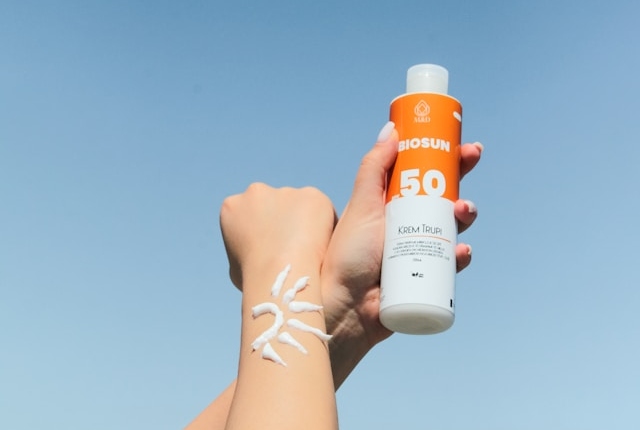
- Regular skin check-ups are also a must
Protecting Your Face And Skin is A Long Term Commitment
Salt, sun, and wind test your skin daily. A strong routine keeps your face clear and healthy. Hydration, sunscreen, and protective gear work best together. Protecting your face from sun, salt, and sand your face starts with small habits. Take action before damage sets in. A few minutes of care make a difference. Keep your skin strong so you stay in the water longer.
Posted on: February 26th, 2025

Moving to a humid climate can be both exciting and challenging, especially when it comes to skincare. The increased moisture in the air affects your skin in ways you might not expect. You may notice more oil production, clogged pores, and unexpected breakouts. On the flip side, humidity can also prevent dryness and enhance your skin’s natural glow. To maintain balanced, healthy skin, it’s crucial to adapt your skincare routine to the new environment. Here, we’ll explore the best skincare practices for thriving in a humid climate, helping you look and feel your best every day.
Understanding Humidity’s Impact on Your Skin
Humidity has a direct impact on how your skin behaves. In humid climates, the air is saturated with moisture, which can lead to increased sebum production, making your skin feel oilier than usual. This excess oil can mix with sweat and environmental impurities, clogging pores and causing breakouts. At the same time, the skin’s outer layer can retain more moisture, reducing the appearance of fine lines.
However, this moisture retention can also make your skin more sensitive to pollutants. Additionally, the sun can accelerate skin damage, especially when combined with sweat and excess oil. Knowing these effects helps you adjust your routine for healthier, clearer skin.

Your skin will need adjusting after moving to a humid climate
Choose the Right Cleanser
Choosing the right cleanser is essential when moving to a humid climate. As mentioned before, the increased moisture in the air can cause excess oil and sweat, leading to clogged pores and breakouts. So, to keep your skin clear, opt for a gentle, non-comedogenic cleanser that effectively removes dirt and oil without stripping your skin’s natural barrier.
Gel-based or foaming cleansers work well for oily or combination skin while hydrating cleansers are better for dry or sensitive skin. Cleansing twice a day is usually enough to maintain a balanced complexion. The key is to find a product that keeps your skin clean, fresh, and free from irritation.
Lightweight Moisturizers Are Key
In a humid climate, heavy creams can easily clog pores and lead to breakouts. That’s why lightweight moisturizers are essential for maintaining balanced skin.
Opt for gel-based or oil-free formulas that hydrate without feeling greasy. Ingredients like hyaluronic acid provide moisture without clogging pores, keeping your skin plump and refreshed. Non-comedogenic products are particularly useful in preventing acne while maintaining the skin’s natural barrier.
Even if your skin feels oily, skipping moisturizer can lead to dehydration and overproduction of sebum. The right lightweight moisturizer ensures hydration, controls shine, and keeps your skin healthy and comfortable all day long.
Sunscreen Is Non-Negotiable
No matter the climate, sunscreen is essential, but it becomes even more critical in humid conditions. The intense UV rays can penetrate through the moisture in the air, increasing the risk of sunburn and premature aging. Using a broad-spectrum sunscreen with at least SPF 30 protects against both UVA and UVB rays. For a comfortable, non-greasy feel, choose a lightweight, mattifying formula.
Sunscreen and other products that protect your skin from the sun are crucial for preventing hyperpigmentation and maintaining an even skin tone. Reapply every two hours, especially when sweating or spending extended periods outdoors, to stay protected.
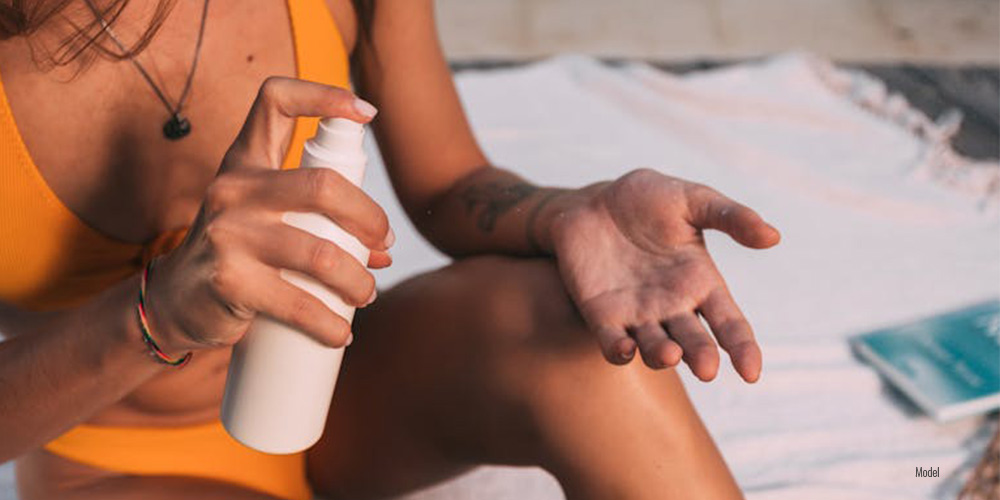
Sunscreen is a must in most climates
Exfoliation: Finding the Balance
Exfoliation is crucial in a humid climate to prevent clogged pores caused by excess oil, sweat, and environmental pollutants. However, finding the right balance is key to avoiding irritation.
Opt for chemical exfoliants like salicylic acid or lactic acid, which gently dissolve dead skin cells without harsh scrubbing. These exfoliants help to clear pores and reduce breakouts, keeping your skin smooth and radiant.
However, keep in mind that over-exfoliating can damage the skin’s protective barrier, leading to sensitivity and redness. Start with once a week and gradually increase to two times if needed.
Preparing for the Move
Preparing for the move to a humid climate involves more than just packing boxes—it also means getting your skincare routine ready. Start by researching the new environment and understanding the local humidity levels to anticipate your skin’s needs. Pack the right products, including travel-sized essentials to maintain your routine during the transition.
To minimize skin issues, avoid unnecessary stress by hiring Beltway Movers DMV to ensure a smooth relocation. Stress and lack of sleep can lead to breakouts and dull skin, so maintaining a calm transition is crucial. Keep familiar, trusted products handy for the initial adjustment period.
Makeup Tips for Humid Climates
Makeup in humid climates can be tricky, but choosing the right products makes all the difference. Opt for lightweight, non-comedogenic foundations and concealers to avoid clogged pores. A mattifying primer helps control shine, while a setting spray keeps makeup in place despite the humidity. Switching to breathable, sheer coverage allows your skin to breathe and reduces the risk of breakouts.
When moving to a humid climate, adapting your makeup routine is just as important as updating your skincare. Embrace minimalistic looks, focusing on long-lasting formulas that stay fresh without feeling heavy, ensuring comfort and confidence all day.
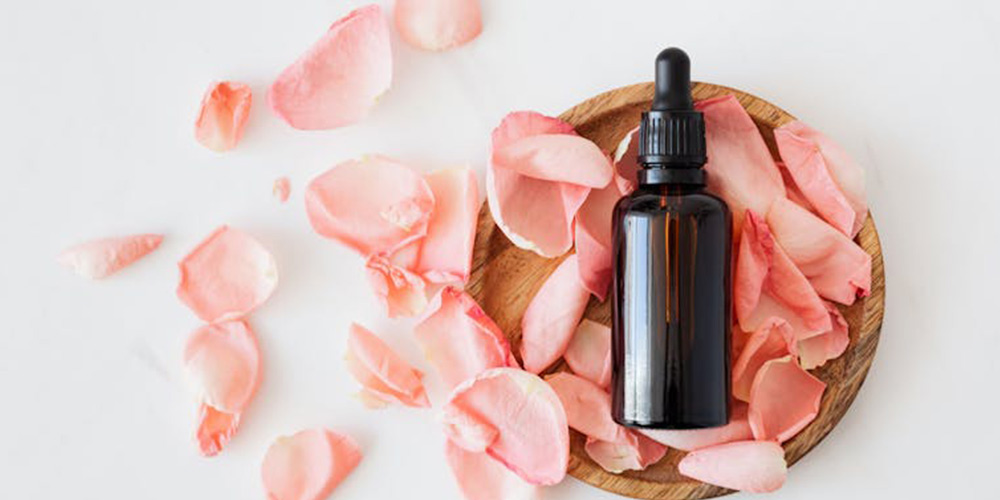
Make sure to use products that suit your skin
Hydration and Diet’s Role in Skincare
Hydration and diet play vital roles in maintaining healthy skin in a humid climate. Drinking enough water helps balance moisture levels and flush out toxins, reducing breakouts. Foods rich in antioxidants, like berries and leafy greens, protect the skin from environmental stressors.
Omega-3 fatty acids from fish and nuts support skin elasticity and hydration. Limiting sugar and processed foods helps prevent inflammation and acne. By nourishing your body from within, you can enhance your skin’s resilience and achieve a natural, healthy glow.
Adjust Night-Time Routine for Recovery
A well-planned night-time skin care routine is essential for skin recovery in a humid climate. Focus on lightweight serums with antioxidants or niacinamide to repair and protect your skin. Opt for gel-based or non-comedogenic moisturizers to maintain hydration without clogging pores.
Sleeping in a cool, well-ventilated room prevents excess sweating and irritation. Avoid heavy creams that can suffocate the skin overnight, leading to breakouts. By keeping your night routine light and breathable, you help your skin rejuvenate while maintaining a clear, healthy complexion.
Embrace Humidity with Confidence!
Moving to a humid climate requires adapting your skincare routine for balance and clarity. By choosing lightweight products and maintaining healthy habits, you can prevent breakouts and irritation. Experiment to find what works best for your skin. Embrace the change, and enjoy the natural glow that humidity offers.
Posted on: February 10th, 2025
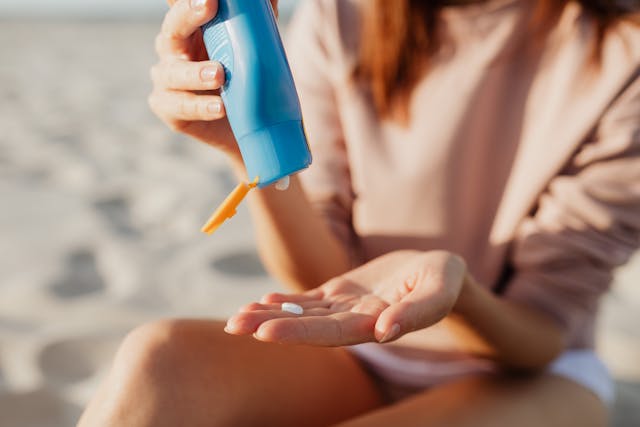
Living under constant sun exposure demands more than just SPF. While sunscreen remains essential, other key skincare strategies protect and nourish the skin. Life under the sun can take a toll on the skin, leading to premature aging, dehydration, and damage. Incorporating lesser-known but powerful skincare ingredients and habits makes maintaining healthy and resilient skin easier. This guide explores these unexpected heroes and how they contribute to lasting skin health.
Hydration as a Barrier Against Sun Damage
Dehydrated skin becomes more vulnerable to environmental stress. Sun exposure accelerates moisture loss, leading to dryness, dullness, and fine lines. Hydrating serums and moisturizers with hyaluronic acid, glycerin, and ceramides help the skin retain moisture. Aloe vera gel and squalane replenish lost hydration and strengthen the skin barrier. Consistently drinking water supports hydration from within, making skin more resilient.
Antioxidants That Fight Free Radical Damage
The sun triggers oxidative stress, which leads to premature aging. Antioxidants neutralize free radicals, reducing inflammation and preventing collagen breakdown. Vitamin C brightens the skin and repairs damage. Green tea extract contains polyphenols that calm irritation and minimize redness. Niacinamide strengthens the skin barrier while reducing hyperpigmentation caused by prolonged sun exposure.
Natural Oils That Offer UV Protection
Certain plant-based oils provide an added layer of defense. The red raspberry seed oil contains natural UV-blocking properties while delivering hydration. Carrot seed oil is another option known for its protective qualities. Jojoba oil mimics the skin’s natural sebum, helping maintain balance and shield against sun-induced dryness. These oils complement sunscreen without replacing it, reinforcing the skin’s ability to withstand sun exposure.
After-Sun Recovery with Soothing Ingredients
Even with precautions, prolonged exposure can irritate the skin. Ingredients like aloe vera, calendula, and chamomile help calm redness and inflammation. Centella Asiatica speeds up healing, making it a valuable addition to after-sun care. Applying cooling gels or masks infused with these ingredients provides instant relief and helps the skin recover faster.
Skincare Heroes for Life Under the Sun: The Role of Collagen in Sun Protection
Collagen production declines with age, but sun exposure accelerates this process. This results in sagging, wrinkles, and reduced elasticity. Collagen-boosting skincare, such as peptides and retinol, helps maintain firmness. Consuming collagen-rich foods like bone broth, eggs, and fish supports skin health from the inside out. Supplementing with hydrolyzed collagen peptides may further enhance elasticity and resilience. Protecting collagen levels through a combination of skincare and diet ensures the skin remains strong and youthful even under prolonged sun exposure.
Wearing Protective Clothing for Extra Defense
Skincare extends beyond topical applications. UPF-rated clothing blocks harmful rays, offering an added layer of protection. Wide-brimmed hats shield the face, neck, and shoulders from direct sun exposure. Lightweight, long-sleeved fabrics made from breathable materials help keep the skin covered without causing discomfort. Sunglasses with UV protection prevent sun damage around the delicate eye area. Protective accessories enhance skincare efforts, ensuring a holistic approach to sun defense.
Mineral Sunscreen vs. Chemical Sunscreen
Choosing the right sunscreen plays a significant role in protection. Mineral sunscreens with zinc oxide or titanium dioxide create a physical barrier against the sun’s rays. These formulas work immediately upon application and are less likely to irritate sensitive skin. Chemical sunscreens absorb UV rays and convert them into heat, but some ingredients may cause sensitivity. Reapplying sunscreen every two hours ensures consistent protection.
Adjusting Skincare Based on Climate and Location
Sunny climates affect the skin differently depending on humidity, altitude, and environmental factors. Desert regions with dry heat strip moisture require richer, more hydrating skincare. Humid areas increase sweat production, making lightweight, non-comedogenic products essential. Coastal locations with high salt exposure can lead to dehydration, demanding extra nourishment to maintain skin health. A dedicated skincare routine is crucial when relocating to a region with year-round sun.
At the same time, planning such a move requires careful coordination for work or a lifestyle change. Valley Relocation and Storage CA, a trusted moving and storage company, specializes in seamless transitions to new locations. With expert packing, secure transportation, and climate-sensitive storage options, they help individuals and businesses relocate efficiently. Partnering with these professionals ensures a stress-free move, allowing you to focus on settling into your new environment and adapting your skincare routine to the local climate.
Dietary Choices That Support Skin Resilience
What goes into the body reflects on the skin. Foods rich in omega-3 fatty acids, such as salmon and flaxseeds, strengthen the skin barrier. Leafy greens and citrus fruits provide essential vitamins that repair damage. Hydrating foods like cucumbers and watermelon help maintain moisture levels. Limiting processed foods and sugar reduces inflammation and breakouts. A well-balanced diet supports the skin’s natural defenses, keeping it strong and resilient against sun exposure.
Sun Exposure and Its Effects on Different Skin Types
Different skin types react uniquely to life under the sun. Those with fair skin are more prone to burns and require frequent sunscreen reapplication. Oily skin may experience increased breakouts due to sweat and excess sebum production. Dry skin needs more hydration to counteract moisture loss from prolonged exposure. Understanding individual skin needs helps in selecting the right products and routines for optimal protection.
Prioritizing Nighttime Skincare for Recovery
The skin repairs itself overnight, making nighttime skincare essential. Retinol stimulates cell turnover, reducing sun damage over time. Hydrating night creams infused with ceramides and fatty acids restore lost moisture. Antioxidant-rich serums work overnight to neutralize free radicals. Applying a soothing balm or overnight mask ensures the skin remains supple and nourished.
Building a Holistic Skincare Routine for Sun-Exposed Skin
A comprehensive routine for life under the sun involves more than just sunscreen. Layering antioxidant serums, hydrating moisturizers, and repairing treatments ensures the skin stays healthy. Double cleansing removes sweat, dirt, and sunscreen residue. Consistent exfoliation prevents clogged pores and enhances product absorption. Treating sun-exposed skin with nourishing ingredients keeps it balanced and resilient.
Embracing Life Under the Sun with Smart Skincare Choices
Living in sunny environments offers many benefits but requires careful skincare management. Hydration, antioxidants, and protective habits help mitigate sun damage. Nourishing the skin from within enhances its natural resilience. Life under the sun can be enjoyable and rewarding with the right approach to skincare. Combining SPF with these unexpected heroes makes maintaining healthy, radiant skin achievable every day.
Posted on: January 21st, 2025

Woman in bikini applying sunscreen lotion.
Living in sunny climates is often seen as a luxury. The promise of warm weather, outdoor activities, and abundant sunshine can make it feel like an ideal environment. However, constant exposure to the sun can significantly impact your skin. Skin damage is not just a cosmetic concern; it can lead to long-term health problems, including premature aging and an increased risk of skin cancer.
Understanding Skin Damage: What Happens When You’re Exposed to the Sun?
When exposed to the sun, your skin absorbs ultraviolet (UV) rays. These rays are invisible forms of radiation that can penetrate the skin and cause harm at a cellular level. UV radiation is classified into two types: UVA and UVB. UVA rays are primarily responsible for skin aging and wrinkling, while UVB rays cause sunburns. Both types of rays contribute to skin damage by breaking down collagen, the protein that gives skin its firmness and elasticity. Over time, this leads to visible signs of aging and increased vulnerability to skin cancers.
The Sun’s Impact on Collagen and Elasticity
Collagen and elastin are essential proteins that help your skin maintain its structure and flexibility. UVA rays penetrate deeper into the skin and cause long-term damage to these proteins. As you spend more time in the sun without protection, your skin’s collagen production decreases, and elastin fibers break down. This results in wrinkles, sagging, and an overall loss of skin firmness. Unsurprisingly, people living in sunny places with frequent sun exposure experience more pronounced signs of aging than those living in cooler, cloudier environments.
Does the Environment Matter? The Difference Between Cities
Relocating to sunnier cities like Phoenix, Los Angeles, or Miami means more exposure to intense UV rays, which can increase the risk of damage. However, sunlight isn’t the only environmental factor to consider—air quality also plays a role. High pollution levels can worsen skin damage by interacting with UV rays, leading to oxidative stress and premature aging. Incorporating anti-pollution skincare products alongside sunscreen in such areas becomes essential for protecting your skin.
At the same time, if you’re planning a move to a more vibrant, sun-soaked city, reliable movers can help make your transition seamless. As experienced, professional movers, Pro Movers Miami specializes in efficiently helping individuals and families relocate so you can settle in quickly and focus on adapting to your new environment. With their support, you can start your next chapter stress-free and stay prepared to protect your skin from the sunshine and urban pollutants.
Premature Aging Due to Skin Damage
One of the most noticeable effects of excessive sun exposure is premature aging. When UV rays damage the skin’s underlying structures, it accelerates the appearance of fine lines, wrinkles, and age spots. This phenomenon is commonly known as photoaging. Photoaging is caused by repeated and prolonged sun exposure, even without sunburn. Over time, these accumulated effects can make you appear much older than you are. It’s not just about wrinkles—sun damage can also make your skin appear dull and uneven, making it harder to maintain a youthful, radiant complexion.
The Risk of Skin Cancer from Sun Exposure
Skin cancer is the most common type of cancer in the United States, and sun exposure plays a significant role in its development. UV radiation causes mutations in skin cells, which can lead to the growth of abnormal cells. These mutations are key in forming skin cancers, including melanoma, basal cell carcinoma, and squamous cell carcinoma. The risk of developing skin cancer increases with repeated sun exposure, especially if you’ve experienced multiple sunburns. Living in a sunny place means more opportunities for UV exposure, which can increase the cumulative risk of developing skin cancer.
How to Protect Your Skin from Damage in Sunny Climates
The good news is that there are simple steps you can take to protect your skin from the harmful effects of the sun. Sunscreen is your first line of defense. Choose a broad-spectrum sunscreen with a high SPF (sun protection factor) to protect against UVA and UVB rays. Apply sunscreen generously to all exposed areas of your body, even on cloudy days or during winter when UV rays can still penetrate through the clouds. Additionally, seek shade whenever possible and wear protective clothing, such as hats, sunglasses, and long-sleeved shirts, to shield your skin from direct sunlight.
Vitamin D: A Double-Edged Sword
While sun exposure is necessary for producing vitamin D, which is vital for bone health and overall well-being, too much sun can be harmful. It’s a fine balance between getting enough sunlight to meet your vitamin D needs and protecting your skin from damage. The good news is that you don’t have to spend hours in the sun to get adequate vitamin D. Short periods of sun exposure are often enough, especially if you live in a sunny climate. Just remember to apply sunscreen to prevent skin damage while enjoying the health benefits of sunlight.
The Importance of Skin Care in Sunny Locations
If you live in a sunny place, it’s important to incorporate a solid skincare routine to protect your skin. Regularly using sunscreen, even indoors, can prevent skin damage from incidental sun exposure. You can also invest in products that help repair damaged skin, such as antioxidants, hyaluronic acid, and retinoids. These ingredients can help boost collagen production, reduce the appearance of wrinkles, and promote healthier skin. Taking care of your skin daily can minimize the long-term effects of living in a sunny environment.
Protecting Your Skin While Enjoying the Sun
In conclusion, living in a sunny place may seem like the ideal lifestyle, but it comes with its risks—primarily skin damage. Sun exposure can damage your skin over time, causing premature aging, wrinkles, and an increased risk of skin cancer. However, with the right precautions, you can protect your skin and enjoy the sunshine without compromising your health. Always wear sunscreen, stay in the shade, and adopt a skincare routine that supports skin repair.















